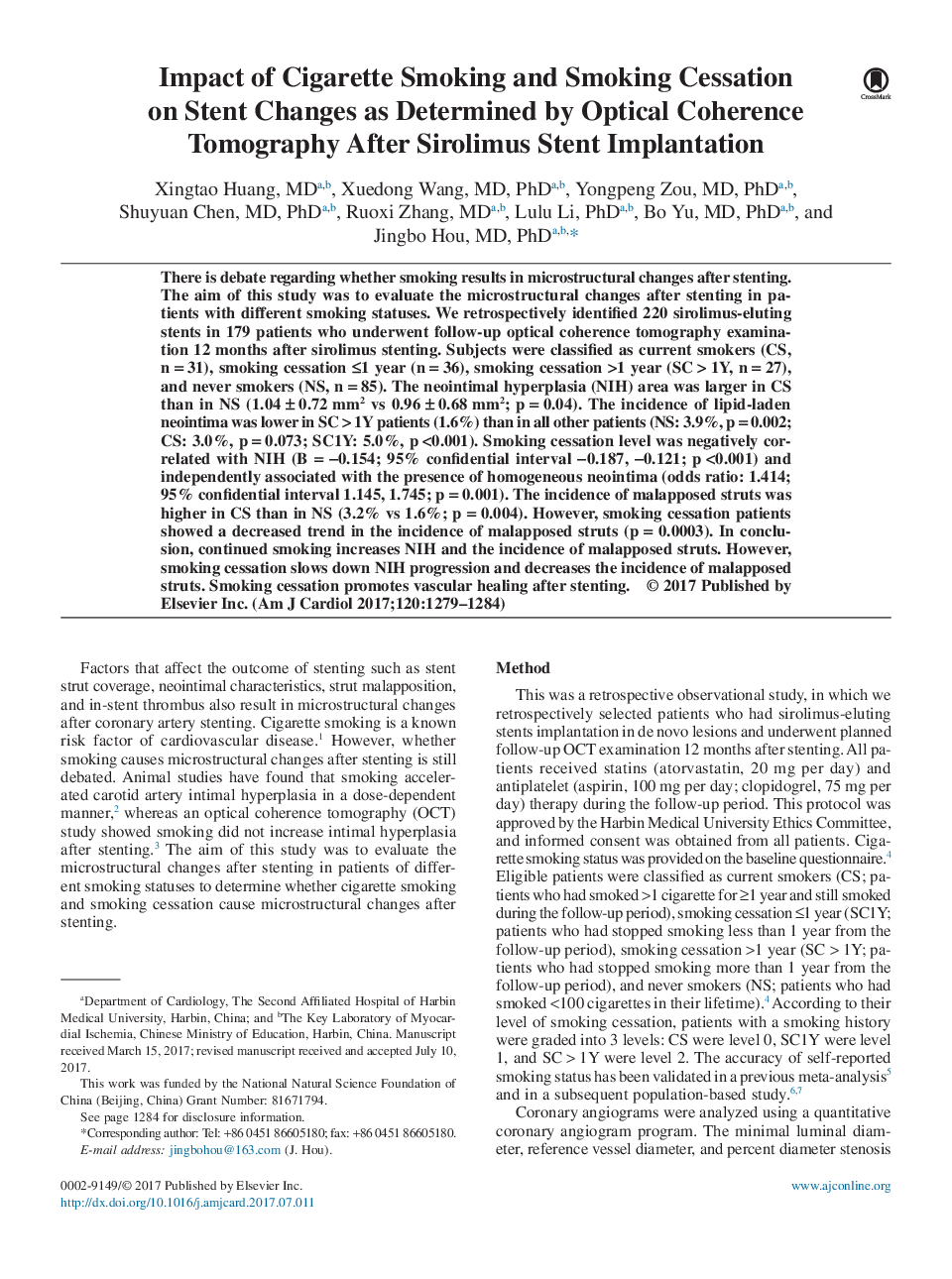| Article ID | Journal | Published Year | Pages | File Type |
|---|---|---|---|---|
| 5594636 | The American Journal of Cardiology | 2017 | 6 Pages |
Abstract
There is debate regarding whether smoking results in microstructural changes after stenting. The aim of this study was to evaluate the microstructural changes after stenting in patients with different smoking statuses. We retrospectively identified 220 sirolimus-eluting stents in 179 patients who underwent follow-up optical coherence tomography examination 12 months after sirolimus stenting. Subjects were classified as current smokers (CS, nâ=â31), smoking cessation â¤1 year (nâ=â36), smoking cessation >1 year (SCâ>â1Y, nâ=â27), and never smokers (NS, nâ=â85). The neointimal hyperplasia (NIH) area was larger in CS than in NS (1.04â±â0.72âmm2 vs 0.96â±â0.68âmm2; pâ=â0.04). The incidence of lipid-laden neointima was lower in SCâ>â1Y patients (1.6%) than in all other patients (NS: 3.9%, pâ=â0.002; CS: 3.0%, pâ=â0.073; SC1Y: 5.0%, pâ<0.001). Smoking cessation level was negatively correlated with NIH (B = â0.154; 95% confidential interval â0.187, â0.121; pâ<0.001) and independently associated with the presence of homogeneous neointima (odds ratio: 1.414; 95% confidential interval 1.145, 1.745; p = 0.001). The incidence of malapposed struts was higher in CS than in NS (3.2% vs 1.6%; p = 0.004). However, smoking cessation patients showed a decreased trend in the incidence of malapposed struts (p = 0.0003). In conclusion, continued smoking increases NIH and the incidence of malapposed struts. However, smoking cessation slows down NIH progression and decreases the incidence of malapposed struts. Smoking cessation promotes vascular healing after stenting.
Related Topics
Health Sciences
Medicine and Dentistry
Cardiology and Cardiovascular Medicine
Authors
Xingtao MD, Xuedong MD, PhD, Yongpeng MD, PhD, Shuyuan MD, PhD, Ruoxi MD, Lulu PhD, Bo MD, PhD, Jingbo MD, PhD,
